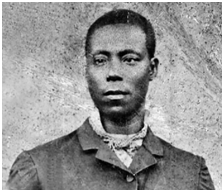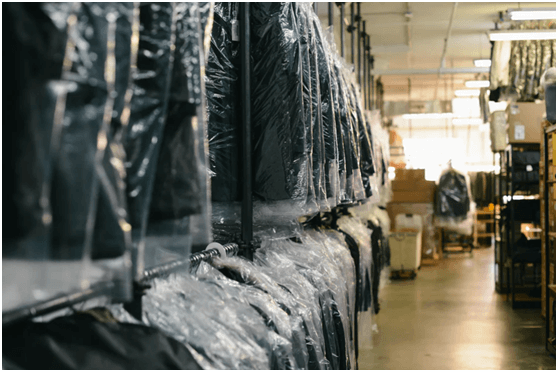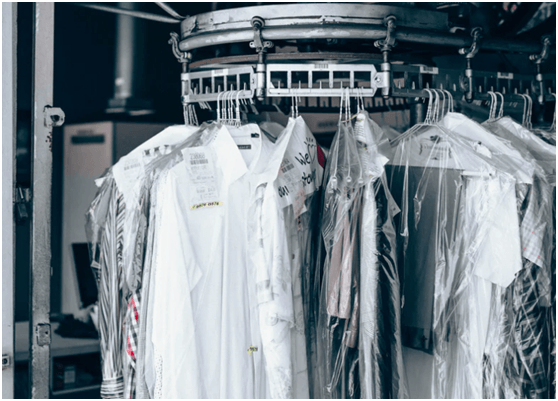What is Dry Cleaning and How Dry Cleaners Work
Dry Cleaning Definition
Dry cleaning is a way of washing clothes, including removing oil or stains, with organic chemical solvents. It is called dry cleaning because water does not come into direct contact with the laundry during the washing process. Dry cleaning originated in Paris, France, so it is often called “French dry cleaning”. At present, most dry cleaning is done by professional dry cleaners.
The Advantages of Dry Clean
The main feature of dry cleaning is to avoid the damage caused by water washing to clothing fabrics, no shrinkage, no deformation, good color protection, not easy to cause clothing fading, soft hand, easy to iron and can thoroughly clean the oil or stain on the clothing.
Dry cleaning is suitable for those fabrics that are not suitable for washing and easy to fade. It has the advantage of preventing the deformation of fabric fibers and keeping the original color of the fibers, and it can also extend the life of the clothes.
Dry-cleaned clothes also have a special effect of disinfection, sterilization, not easy for insects, easy to preserve.
The advantages of dry cleaning can be summarized as the following three points.
Convenient centralized cleaning, saving time and effort;
Strong stain removal ability;
Protects clothing materials;
The Disadvantages of dry cleaning
1. Not all clothes are suitable for dry cleaning Polypropylene fabrics, rubber products (including elastic), clothing with metal or paint ornaments, plush products with glue involved in the production, is not very suitable for dry cleaning, especially for leather products, if dry-cleaned for several times may appear cracks or skin wrinkles, or even skin off and so on.
2. Part of the chemical detergent toxic and harmful if the dry cleaning agent is composed of tetrachloroethylene, dry-cleaned clothes can not be directly on the body, need to dry in the ventilation 4-5 days to wear. But despite this, it may not be able to eliminate the residue of detergent on the clothing, long-term wear such clothing, then, maybe harmful to health. Please keep dry-cleaned clothes away from children.
3. May cause clothing damage in the dry cleaning process, individual clothing may not be able to withstand the dry cleaning in the extrusion, impact or due to the corrosive nature of the detergent problems, the occurrence of broken buttons, metal decorative deformation.
4. There is not private, not a clean situation many strangers’ clothes mixed together is easy to cause cross-contamination; in addition, in order to save manpower and material resources, dry cleaning machine is not possible to wash diligently, the inside will also be left a lot of bacteria; at the same time, due to more processes, the whole process may not be able to disinfection treatment. Overall, not private and clean enough.
5. easy to cause air pollution in the clothing cleaning before pretreatment, spraying organic solvents evaporated into the air may cause air pollution. At the same time, in the process of cleaning and drying, the volatilization of cleaning agents and the emission of exhaust gas after drying is also caused by a certain amount of air pollution.
Dry Cleaning History

Thomas Jennings
The inventor, Thomas Jennings, began as an apprentice to a famous New York tailor who later opened a large and successful clothing store in lower Manhattan. In 1821, at the age of 29, he patented his method of removing dirt and grease from clothing by the “dry-cleaning” method.
Dry cleaning originated in Paris, France in the early 19th century. Legend has it that a Frenchman named Jean-Jolly owned a dyeing factory in Paris. One day, one of the workers in the factory accidentally overturned an oil lamp on the table, and the lamp oil-wet the tablecloth on the table, and when the tablecloth was dry, Jolly was surprised to find that the place on the dirty tablecloth that had been wet by the lamp oil was obviously cleaner than the other places. So, Jolly deduced that this substance had a cleaning effect, and thought that the application of certain solvents in the washing process without the involvement of water could remove some of the oil and dirt stains that could not be washed off with water, and then developed in its factory applications. This process of washing is the original stage of dry cleaning. Since dry cleaning originated in France, some people call this type of washing “French washing” until today.
For the first 50 years after the birth of dry cleaning, solvents such as benzene, kerosene, gasoline, and camphor terpene were used. These solvents were all flammable and often caused fires. In 1897, Ludwig Antling of Leipzig, Germany, made a step forward in dry cleaning technology. He invented the use of carbon tetrachloride as a dry-cleaning agent. Carbon tetrachloride has a good washing effect and is not flammable, but has a pungent odor. And it was corrosive to equipment. By 1918, Europe began to switch to trichloroethylene to replace carbon tetrachloride. Since then, the dry cleaning industry has gradually developed.
The laundry industry has been mechanized in the 21st century. The commonly used dry cleaning fluid is Stauda solvent, which was invented in 1928, and perchloroethylene, a solvent derived from petroleum, which is not a fire hazard but causes cancer. Because the dry-cleaning fluid is expensive, the solvent is often distilled from the laundry after it is finished and then filtered for repeated use.
Nowadays, in Europe and the United States, and other developed countries dry cleaning industry has a history of hundreds of years, has formed a complete system, whether in large cities or small towns, dry cleaning stores can be seen everywhere, has become a necessity of life.
How Dry Cleaner Works
The basic configuration of dry cleaners:
1.Petroleum dry cleaning machine or tetrachloroethylene dry cleaning machine
2.Washing and drying machine or washing and drying machine
3. Ironing table/ Ironing board
4. Steam generator
5. Stain removal table
6.Configuration of disinfection cabinet, computerized cashier system, clothes conveying line, packaging machine portrait machine, etc.
The commercial process of dry cleaners:
Step 1: Clothes collection
Receiving clothes is the front desk staff of the dry cleaner to collect clothes from customers and sort them, nail on the label, so that each piece of clothing has an identification number to ensure that the clothes can be returned to you after cleaning, as well as price assessment.
Step 2: Inspection
Checking clothes is a very important step for the laundry pre-processing, not only to determine the quality of laundry, but also the reputation of the dry cleaner and the impact of the store, to check the main stains and customer requirements, as well as check the clothes with pockets to see if there are items left behind.
Step 3: Disinfection
Because the clothes you bring in maybe different people’s and different materials, and the environment they come in contact with is also different, so after the sorting process is finished, disinfection should be carried out.
Step 4: Pre-staining
Stain removal is for the clothes that have not been dry-cleaned or washed before attached to the surface of the clothing stains, or dry-cleaned clothing part of the water-soluble stains to deal with, and now there are a lot of clothes stains are dry-cleaned when you can not remove or difficult to remove, you need to remove the stains in advance.
Step 5: Laundry
After the completion of stain removal is the complete laundry, water washing machine, dry cleaning machine.
Step 6: Secondary Stain Removal
After the dry cleaning equipment, some clothes will have stain residue, this time it is necessary to secondary stain removal.
Step 7: Ironing
After the stain removal work is done, you should consider ironing, clothes ironing work is very important.
Step 8: Quality check
After ironing clothes should be submitted to the laundry team leader or store manager for inspection, to see if there is no place to wash or wash bad places.
Step 9: Second disinfection
After completing the quality check to ensure that there are no errors, the second disinfection will be carried out, because the detergent is also part of the chemical residue, so to sterilize.
The tenth step: clothing packaging
After disinfection and drying the clothes can be packaged.
Step 11: Software registration management
After the clothes have been washed, check the clothes number with the registered name, change the status of the clothes to wash, and wait for the clothes to be picked up.
Main Steps of Dry Clean
Step 1, Pretreatment
Also known as stain removal treatment. It is the manual pretreatment of heavily contaminated dirt and stains that are insoluble in dry cleaning solvents (such as juice, nail polish, paint, ink, etc.) with auxiliaries, without using water. After receiving the clothes, the dry cleaner first classifies the clothes according to color, with or without accessories, material, etc. and focuses on cleaning the stain concentration with detergent first
Step 2, Main Wash
The pre-treated laundry is placed in the dry cleaning machine, washed thoroughly with dry cleaning solvent and tumble-dried. Dry cleaners in the choice of dry cleaning solvents are generally divided into three types, chlorinated hydrocarbon synthetic solvents, chlorofluorocarbon solvents and hydrocarbon solvents, and carbonic acid solvents because of less harm to clothing and the human body and high cleanliness is quite favored by dry cleaners.
Different materials of clothes, dry cleaners also have different ways of handling:
Cotton and linen clothes
Cotton clothing contains proteins, can not withstand high temperatures, if after high temperatures will be yellowing and discoloration; linen clothing is easy to deformation, we must pay attention to not vigorously rub, squeeze. Therefore, for cotton and linen clothing, if not particularly dirty, in order to keep the clothes clean, bright, dry cleaners are generally after pretreatment, the clothing easy to dirty parts of the focus on cleaning can be.
Silk
Silk clothing belongs to the category of special attention, such clothing can not be washed with rough clothing, easy to “draw silk” situation, and can not be washed in the washing machine, but also can not use dry cleaning agent. Because dry cleaning agents are more corrosive will damage the silk, so, silk clothing is generally pretreated, using mild detergents for cleaning.
Tweed
Tweed clothing contains proteins and grease, not resistant to high temperatures and easy to wear, so in the cleaning process to pay special attention not to vigorously rub, nor in the machine after repeated extrusion, friction, in the dry cleaner is generally slightly over water, to a soft detergent cleaning.
Chemical fiber clothing
Viscose fiber clothing wear resistance is poor, easy to pile deformation, so wear or washing should be less rubbing less wringing. Do not hang for a long time to avoid elongation and deformation. Wash and dry the collection to avoid high humidity and a high-temperature environment.
Leather clothing
Leather dry cleaning is mainly with tetrachloroethylene, petroleum solvent, etc. Dry cleaning leather mainly masters the three elements.
Step 3, Post-treatment
It is mainly aimed at removing residual dry-cleaning solvents and ironing and shaping from the laundry.
How to Dry Clean at Home
It is generally not possible to dry clean clothes at home because there is no special equipment.
Then dry-cleaning at home can only use simple manual washing steps and methods.
1. Clean surface dust: after drying the garment, beat it with rattan or wooden stick, dust the clothes out, and then brush the surface of the garment with a brush. Tweed clothing more dust, brush with a brush once, you can lay the clothes flat, put a wrung-out wet cloth or towel on it, gently pat with your hand on the wet cloth or towel, so that the dust on the clothes popped out after staining the wet cloth or wet towel, can be better to remove the dust.
2. Focus scrubbing: the most easily dirty clothes are collar, cuffs, pocket mouth, and other parts, first these easy to dirty parts with dry detergent wipe again, individual dirt more serious parts should also be first focus scrubbing.
3. Comprehensive scrubbing: with a small brush or towel dipped in a small amount of dry cleaning agent will be the whole clothes in order to scrub once, the order is the sleeves, the front, back body, collar, and finally, the clothes lining also scrubbed once. If the color of the lining of the clothes is much lighter than the color of the fabric, then scrub the lining of the clothes first. Dry cleaning should pay attention to, regardless of the use of small brushes or towels, a dip in detergent should not be too much, otherwise both waste, the effect is not good.
4. Air dry: after washing the clothes, do not wear them immediately, should be placed in the ventilation air dry, do not put in the sun exposure. Because most of the dry-cleaned clothing is made of natural fibers as raw materials of senior worsted products, after exposure to the sun, can accelerate fiber aging, so that it loses elasticity and natural luster, shortening the life of the clothes.
After doing these steps, you have been a professional home dry cleaner owner.


